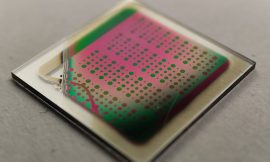A new number system, developed by less than 10 students in northern Alaska, is beginning to enter the digital world. Called the Kaktovian number system, it differs from the globally dominant Indian-Arabic numerals in that it is based on 20, making it a better fit with the number system of the Inuit language Iñupiaq.
Since being developed as part of a school project, the Iñupiaq number system has been taught alongside Arabic-Indic characters, and student performance has noticeably improved. Despite fears that the system could be lost or pressured out of education, it has been submitted to the Unicode Consortium and is now being digitized.
The numbers from 1 to 20 are visually represented by slashes or dashes running from top to bottom, and all numbers can be represented by combinations of these. Calculations can be carried out intuitively, and division, in particular, is simpler than with Arabic-Indic numerals.
The digitization of the Kaktovian number system is viewed as the first step in recognizing other indigenous number systems, such as the Cherokee nation’s syllabary, which has had a number system for over 200 years.
Overall, the Kaktovian number system is seen as a visually easy-to-understand alternative to Arabic-Indic numerals, and it represents a new way for digitization to recognize and support indigenous languages and cultures.



